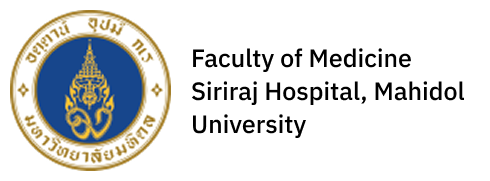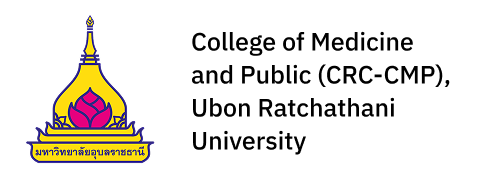Comprehensive Clinical Research Solutions in Thailand
Delivering high-quality, end-to-end services for global medical innovations
Comprehensive Clinical Research Solutions
Specialized in CRO, SMO, site operations, data management, and regulatory affairs
Trusted Clinical Trial Partner in Thailand
Supporting global sponsors with local expertise and full-service solutions
Our Services
Clinixir offers end-to-end solutions for all your clinical research needs. Clinixir can be your ideal partner and guide throughout every step of your clinical trial, from scientific and regulatory support to compliance, pharmacovigilance, site engagement, and data management.
Clinical Trial Management
End-to-end trial oversight ensuring quality, compliance, and timely project execution
Regulatory Affairs
Ensuring compliance and approvals through expert guidance and insight
Pharmacovigilance
Safeguarding patient safety with real-time monitoring and proactive risk management
Site Management Organization (SMO)
Delivering clean, secure, and compliant clinical data from collection to submission
Biometrics
Providing robust statistical analysis to ensure accurate and reliable trial outcomes
Real-World Evidence (RWE)
Transforming real-world data into insights that support smarter healthcare decisions
Sponsor’s Local Representative & IOR Services
Lorem ipsum dolor sit amet consectetur adipiscing elit Ut et massa mi
HEOR
Demonstrating treatment value through economic and outcomes-based research
Data ConneX
A nationwide platform for RWE studies and ethical collaboration
Our Services
Clinixir offers end-to-end solutions for all your clinical research needs. Clinixir can be your ideal partner and guide throughout every step of your clinical trial, from scientific and regulatory support to compliance, pharmacovigilance, site-engagement, and data management.
Clinical Trial Management
End-to-end trial oversight ensuring quality, compliance, and timely project execution
Regulatory Affairs
Ensuring compliance and approvals through expert guidance and insight
Sponsor’s Local Representative & IOR Services
Managing submissions, ensuring compliance, and trial coordination
Pharmacovigilance
Safeguarding patient safety with real-time monitoring and proactive risk management
Biometrics
Providing robust statistical analysis to ensure accurate and reliable trial outcomes
Site Management Organization (SMO)
Delivering clean, secure, and compliant clinical data from collection to submission
Real-World Evidence (RWE)
Transforming real-world data into insights that support smarter healthcare decisions
Health Economics and Outcomes Research (HEOR)
Demonstrating treatment value through economic and outcomes-based research
Data ConneX
A nationwide platform for RWE studies and ethical collaboration
Areas of Expertise
Clinixir brings operational excellence and regulatory insight to a broad range of therapeutic areas. With strong site partnerships, deep regional understanding, and experience supporting both global and local sponsors, we help deliver high-quality, efficient trials across Thailand. Our services span from early-phase planning to post-approval support—tailored to the specific demands of each therapeutic area.
-
Oncology trials are among the most complex and resource-intensive in clinical research. Clinixir supports sponsors with full-service project management, access to leading cancer centers, and collaboration with top-tier oncologists across Thailand. Our ability to navigate evolving regulatory requirements and manage long-term, data-heavy studies ensures trials are conducted with precision and compliance.
-
Thailand faces a growing burden of metabolic disorders, making it an ideal environment for studying treatments for conditions such as diabetes, obesity, and NASH. Clinixir works closely with experienced investigators and urban hospital networks to deliver trials that reflect local disease prevalence. We bring proven strategies for protocol adaptation, lifestyle-related variable management, and data-driven decision-making.
-
With its tropical climate and diverse patient population, Thailand is well-positioned for infectious disease research, including dengue, COVID-19, hepatitis, and tuberculosis. Clinixir leverages strong public-private site partnerships and a responsive regulatory framework to support fast-start trials and high-volume enrollment. Our local insight is key in managing outbreak-related studies and public health-focused research.
-
As a region rich in traditional medicine, Thailand offers unique opportunities for evidence-based research on herbal and botanical therapies. Clinixir provides expertise in designing studies that meet international standards while respecting local practices. We work closely with academic institutions and regulatory bodies to ensure product safety, consistency, and scientific validity throughout the research process.
-
Conducting rare disease trials requires specialized recruitment strategies and high coordination across stakeholders. Clinixir helps sponsors overcome challenges in patient identification and retention by leveraging Thailand’s academic networks and referral systems. We also support early engagement with regulatory authorities to streamline study approvals and orphan drug considerations.
-
Device trials require tailored protocols, usability evaluations, and precise regulatory alignment. Clinixir supports both diagnostic and therapeutic device studies, from feasibility through post-marketing. Our familiarity with Thailand’s Medical Device Control Division and hands-on experience managing combination product trials allows us to guide sponsors through compliant and efficient development.
-
Neurological research demands careful site selection, complex endpoint monitoring, and long-term follow-up. Clinixir supports trials in Alzheimer’s, Parkinson’s, epilepsy, and neurodevelopmental disorders, with access to leading neurologists and specialist centers. We focus on ensuring data quality and patient continuity throughout lengthy trial durations, while maintaining adherence to global best practices.
-
Clinixir actively supports clinical trials in advanced and evolving therapeutic areas, including cell and gene therapies such as CAR-T cell therapy. These studies demand complex regulatory navigation, specialized site coordination, and high standards of operational execution—all areas where our team delivers with confidence.
We remain open and responsive to supporting sponsors working in innovative or highly specialized fields beyond traditional trial models. With strong institutional partnerships, experienced project teams, and a flexible operational framework, Clinixir is well-positioned to adapt to new study designs and cutting-edge therapies as they emerge.
As the clinical research landscape evolves, we continue to expand our capabilities to meet the future of medicine.
Areas of Expertise
Clinixir brings operational excellence and regulatory insight to a broad range of therapeutic areas. With strong site partnerships, deep regional understanding, and experience supporting both global and local sponsors, we help deliver high-quality, efficient trials across Thailand. Our services span from early-phase planning to post-approval support—tailored to the specific demands of each therapeutic area.

Oncology
Oncology trials are among the most complex and resource-intensive in clinical research. Clinixir supports sponsors with full-service project management, access to leading cancer centers, and collaboration with top-tier oncologists across Thailand. Our ability to navigate evolving regulatory requirements and manage long-term, data-heavy studies ensures trials are conducted with precision and compliance.

Metabolic Diseases
Thailand faces a growing burden of metabolic disorders, making it an ideal environment for studying treatments for conditions such as diabetes, obesity, and NASH. Clinixir works closely with experienced investigators and urban hospital networks to deliver trials that reflect local disease prevalence. We bring proven strategies for protocol adaptation, lifestyle-related variable management, and data-driven decision-making.

Infectious Diseases
With its tropical climate and diverse patient population, Thailand is well-positioned for infectious disease research, including dengue, COVID-19, hepatitis, and tuberculosis. Clinixir leverages strong public-private site partnerships and a responsive regulatory framework to support fast-start trials and high-volume enrollment. Our local insight is key in managing outbreak-related studies and public health-focused research.

Herbal Medicines
As a region rich in traditional medicine, Thailand offers unique opportunities for evidence-based research on herbal and botanical therapies. Clinixir provides expertise in designing studies that meet international standards while respecting local practices. We work closely with academic institutions and regulatory bodies to ensure product safety, consistency, and scientific validity throughout the research process.

Rare Diseases
Conducting rare disease trials requires specialized recruitment strategies and high coordination across stakeholders. Clinixir helps sponsors overcome challenges in patient identification and retention by leveraging Thailand’s academic networks and referral systems. We also support early engagement with regulatory authorities to streamline study approvals and orphan drug considerations.

Medical Devices
Device trials require tailored protocols, usability evaluations, and precise regulatory alignment. Clinixir supports both diagnostic and therapeutic device studies, from feasibility through post-marketing. Our familiarity with Thailand’s Medical Device Control Division and hands-on experience managing combination product trials allows us to guide sponsors through compliant and efficient development.

Neurology
Neurological research demands careful site selection, complex endpoint monitoring, and long-term follow-up. Clinixir supports trials in Alzheimer’s, Parkinson’s, epilepsy, and neurodevelopmental disorders, with access to leading neurologists and specialist centers. We focus on ensuring data quality and patient continuity throughout lengthy trial durations, while maintaining adherence to global best practices.

Other Therapeutic Areas
Clinixir actively supports clinical trials in advanced and evolving therapeutic areas, including cell and gene therapies such as CAR-T cell therapy. These studies demand complex regulatory navigation, specialized site coordination, and high standards of operational execution—all areas where our team delivers with confidence.
We remain open and responsive to supporting sponsors working in innovative or highly specialized fields beyond traditional trial models. With strong institutional partnerships, experienced project teams, and a flexible operational framework, Clinixir is well-positioned to adapt to new study designs and cutting-edge therapies as they emerge.
As the clinical research landscape evolves, we continue to expand our capabilities to meet the future of medicine.
Oncology
Metabolic Diseases
Infectious Diseases
Herbal Medicines
Rare Diseases
Medical Devices
Neurology
Other Therapeutic Areas
Areas of Expertise
Clinixir brings operational excellence and regulatory insight to a broad range of therapeutic areas. With strong site partnerships, deep regional understanding, and experience supporting both global and local sponsors, we help deliver high-quality, efficient trials across Thailand. Our services span from early-phase planning to post-approval support—tailored to the specific demands of each therapeutic area.
-

Oncology trials are among the most complex and resource-intensive in clinical research. Clinixir supports sponsors with full-service project management, access to leading cancer centers, and collaboration with top-tier oncologists across Thailand. Our ability to navigate evolving regulatory requirements and manage long-term, data-heavy studies ensures trials are conducted with precision and compliance. -

Thailand faces a growing burden of metabolic disorders, making it an ideal environment for studying treatments for conditions such as diabetes, obesity, and NASH. Clinixir works closely with experienced investigators and urban hospital networks to deliver trials that reflect local disease prevalence. We bring proven strategies for protocol adaptation, lifestyle-related variable management, and data-driven decision-making. -

With its tropical climate and diverse patient population, Thailand is well-positioned for infectious disease research, including dengue, COVID-19, hepatitis, and tuberculosis. Clinixir leverages strong public-private site partnerships and a responsive regulatory framework to support fast-start trials and high-volume enrollment. Our local insight is key in managing outbreak-related studies and public health-focused research. -

As a region rich in traditional medicine, Thailand offers unique opportunities for evidence-based research on herbal and botanical therapies. Clinixir provides expertise in designing studies that meet international standards while respecting local practices. We work closely with academic institutions and regulatory bodies to ensure product safety, consistency, and scientific validity throughout the research process. -

Conducting rare disease trials requires specialized recruitment strategies and high coordination across stakeholders. Clinixir helps sponsors overcome challenges in patient identification and retention by leveraging Thailand’s academic networks and referral systems. We also support early engagement with regulatory authorities to streamline study approvals and orphan drug considerations. -

Device trials require tailored protocols, usability evaluations, and precise regulatory alignment. Clinixir supports both diagnostic and therapeutic device studies, from feasibility through post-marketing. Our familiarity with Thailand’s Medical Device Control Division and hands-on experience managing combination product trials allows us to guide sponsors through compliant and efficient development. -

Neurological research demands careful site selection, complex endpoint monitoring, and long-term follow-up. Clinixir supports trials in Alzheimer’s, Parkinson’s, epilepsy, and neurodevelopmental disorders, with access to leading neurologists and specialist centers. We focus on ensuring data quality and patient continuity throughout lengthy trial durations, while maintaining adherence to global best practices. -

Clinixir actively supports clinical trials in advanced and evolving therapeutic areas, including cell and gene therapies such as CAR-T cell therapy. These studies demand complex regulatory navigation, specialized site coordination, and high standards of operational execution—all areas where our team delivers with confidence.We remain open and responsive to supporting sponsors working in innovative or highly specialized fields beyond traditional trial models. With strong institutional partnerships, experienced project teams, and a flexible operational framework, Clinixir is well-positioned to adapt to new study designs and cutting-edge therapies as they emerge.
As the clinical research landscape evolves, we continue to expand our capabilities to meet the future of medicine.
Why Clinixir
-
Our team of qualified clinical research associates, specialists and project managers utilizes innovative databases in our clinical trial services to ensure that all your projects are delivered in a timely manner and meets international standards.
-
Our team members are certified by the International Conference on Harmonization of Good Clinical Practice (ICH-GCP). They ensure that the integrity of data collected, the rights and safety of the participants, and the quality of the clinical products used to conduct the trials meet international standards. Specifically, our professionals are certified in: GCP for Clinical Investigations of Devices, GCP for Clinical Trials with Investigational Drugs and Biologics (ICH Focus), GCP for Clinical Trials with Investigational Drugs and Medical Devices (U.S. FDA Focus), and Good Manufacturing Practices.
-
We recognize the importance of partnerships with academic institutions in driving medical innovation and clinical solutions. Clinixir was founded by eight renowned medical universities in Thailand, and this partnership provides full support of all clinical trial phases, from Ethics Committee submission to patient recruitment.
-
Our professional team is well-versed in the intricacies of medical device studies and therapeutic areas of clinical research. By drawing from diverse expertise, our clinical research services ensure that your new treatment is fully-researched and reaches successful market access.
-
Our talented individuals work closely with clinical research centers across Thailand to ensure that we achieve the best possible outcome for each clinical case. Clinixir’s specialists have worked on several multi-center and multi-regional projects – allowing us to navigate through every type of project.
-
We are recognized for our leading scientific expertise in value proposition strategy development and evidence generation for all stakeholders. Clinixir has an established reputation for our strong capabilities in publication and facilitating healthcare decision-making backed by scientific evidence.

Our Partners and Stakeholders
Clinixir maintains strong partnerships with six leading medical institutions across Thailand, who also serve as our key stakeholders. These institutions provide essential support across all clinical trial phases, ensuring access to world-class clinical trial sites, efficient patient recruitment, and seamless Ethics Committee submissions.
Our Partners and Stakeholders
Our Case Study
Clinixir maintains strong partnerships with six leading medical institutions across Thailand, who also serve as our key stakeholders. These institutions provide essential support across all clinical trial phases, ensuring access to world-class clinical trial sites, efficient patient recruitment, and seamless Ethics Committee submissions.
























Latest News & Updates
Discover our latest news and updates to stay on top of clinical research trends and topics such as decentralized clinical trials, pharmacovigilance, treatment development, medical innovations, clinical trial phases, careers in clinical research, and much more.

Advancing Healthcare Decision-Making Through Network Meta-Analysis

Progress Highlights: Phase II/III Immunotherapy Trial for Advanced Liver Cancer

Is Your EDC System Future-Proof?
Latest News & Updates
Discover our latest news and updates to stay on top of clinical research trends and topics such as decentralized clinical trials, pharmacovigilance, treatment development, medical innovations, clinical trial phases, careers in clinical research, and much more.


Clinixir Announces New CEO, DR. Puchong Padungstt

Top 5 Ways Data Integration Reduces Costs in Clinical Trials

Why Data Integrity Is a Non-Negotiable in Clinical Trials
"I am very pleased to update everyone that the First Country Subject has been enrolled by Thailand Team on 11 October 2023 at site THA-764-002! After all from the start up process up to getting the approval, trainings, documentations, we have finally made it. I know this is not easy, So I want to take this opportunity to give thanks to the site, Clinixir and to the AZ Thailand study team for your hard work!"
Darwelle Manalang
Clinical Project Manager, AstraZeneca (Thailand) Ltd.“Tech Observer would like to thank Clinixir for your close collaboration with the sponsor and us during the recent PY8 application process. Your diligent efforts in supporting the sponsor and coordinating with the sites to obtain the necessary documents for PY8 are commendable. Additionally, Clinixir's attendance for a telephone conference with the sponsor on short notice is highly appreciated. The sponsor is deeply thankful for your dedication and support. Thank you.!”
Peng Chan
Director, Tech Observer Asia Pacific Pte. Ltd.“I am delighted to hear the news and I extend my heartfelt congratulations to each one of your team for reaching this milestone. It reflects the dedication and hard work put forth through exceptional teamwork. Let us carry forward the momentum, enthusiasm, and collaborative spirit to achieve the upcoming milestones. Great job team.”
Dr. Arun Mohan
Sr. Clinical Project Manager ,Tech Observer Asia Pacific Pte. Ltd.“We are highly impressed with Clinixir's team, whose professionalism and expertise have greatly contributed to the success of our project.”
Suleeporn Pisitthakarn
Great Eastern Drug Co.,Ltd.
“The Sponsor extends their gratitude to K Purada and the Clinixir CRAs/CTA for their invaluable assistance and dedication in successfully cleaning and locking the ChulaVac006 database for the project's interim analysis as planned on February 16, 2024. Your efforts are greatly appreciated.”
Suttipong Chinkrua
Project Manager, Freelance
“Thank you for your kind support in ensuring the cleaning and locking of the ChulaVac006 interim analysis database as planned. The sponsor greatly appreciates your dedication.Suttipong Chinkrua.”
Suttipong Chinkrua
Project Manager, Freelance
Subscribe to Our Monthly Newsletter
Sign up to our monthly newsletter to get the latest news and updates delivered directly in your inbox


